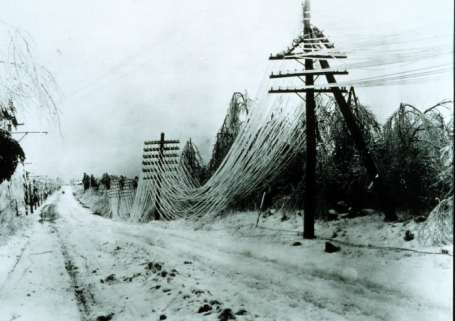Forms of precipitation
There are a variety of
different types of precipitation but we’ll only treat four of the more common
ones here. The kind of precipitation received depends on the variation of
temperature above the surface. Rain
is precipitation in liquid form.
Snow is precipitation in solid
form as (typically) a hexagonal crystal shape. Size and shape of the crystal is
dependent on moisture content and temperature of the air. Recall that in the middle and high latitudes rain begins as snow. If
the air temperature near the surface is above freezing, the snow will melt into
rain and fall in liquid form. If the air temperatures are below freezing on
its journey toward the surface, precipitation will be in the form of snow.
Sleet occurs when snow falls through a warm layer of air and melts. Before
reaching the ground, the precipitation passes through a cold layer of air
causing
the water to refreeze and fall as sleet. Freezing rain occurs when snow melts
upon passing through a warm layer of air and then freezes on the surface whose
temperature is at or below freezing. Significant amounts of freezing rain coats
the surface with a glaze of ice making roadways treacherous and toppling trees
and downing power lines. Hail falls as rounded pellets or balls of
ice from severe thunderstorms. Vertical motions up-and-down through the
storm create concentric rings of ice around the hail stone.
Figure 7.32 A heavy cover of ice and snow bring
down these power lines
Assess your basic understanding of the preceeding material by "Looking Back: Stability, Clouds and Precipitation" or skip and continue reading. |

